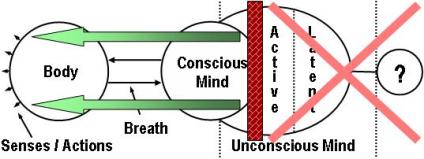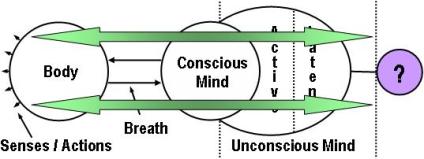|
Home Site Map Short course 4 steps 7 skills Why? Clouded mind |
||||||||||||||
|
|
Mindfulness The terms "mindfulness" and "mindfulness meditation" have become extremely popular in recent years. Mindfulness is generally described as open attention to thoughts, emotions, and sensations in the present moment. It is also described as including awareness of body and breath. If the mind becomes distracted from this attention, that attention is brought back to the body and breath, and to the mental processes of the present moment. It is easy to think that this "mindfulness" is a unique practice, separate unto itself, or to be an exclusive part of some particular traditions or religions. It is as if mindfulness has become a brand name like some consumer product. However, the fact of the matter is that this kind of attention is not some separate practice, but has been part of meditation practices from the beginning of history of the sages and yogis, and their many lineages or traditions. Some view mindfulness meditation as complete unto itself. However, this perspective can easily miss the fact that deeper meditation traditions see this awareness of the conscious mental activity not as an end unto itself, but as preparation for the more advanced practices. Some see the goal as being one of quieting the conscious mind and stilling the physical body, which is very useful for physical health. Stilling the body and quieting the mind are prerequisites to exploring and expanding through the unconscious mind so that the true Self, beyond all of these, can be experienced. Mindfulness is extremely useful, and each practitioner of meditation must decide for himself or herself whether to practice only at the level of quieting the conscious mind or seeing this as preparation for the deeper practices leading to the realization in direct experience of the Self, the Atman, which is one with the ocean of Brahman, the Absolute Reality. Quieting the Conscious Mind:
Beyond the Conscious Mind:
-------
|
|
||||||||||||


